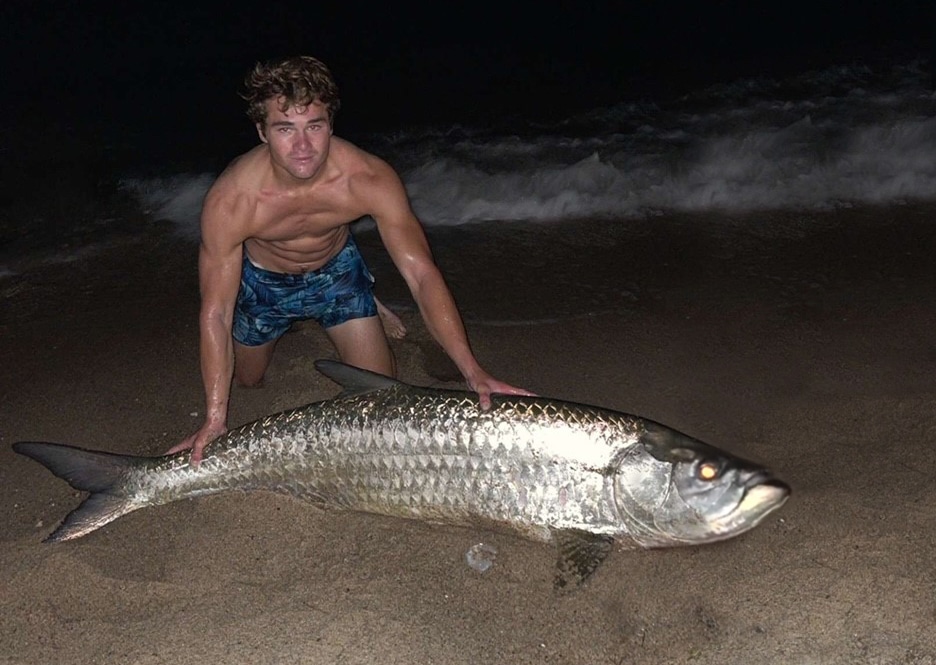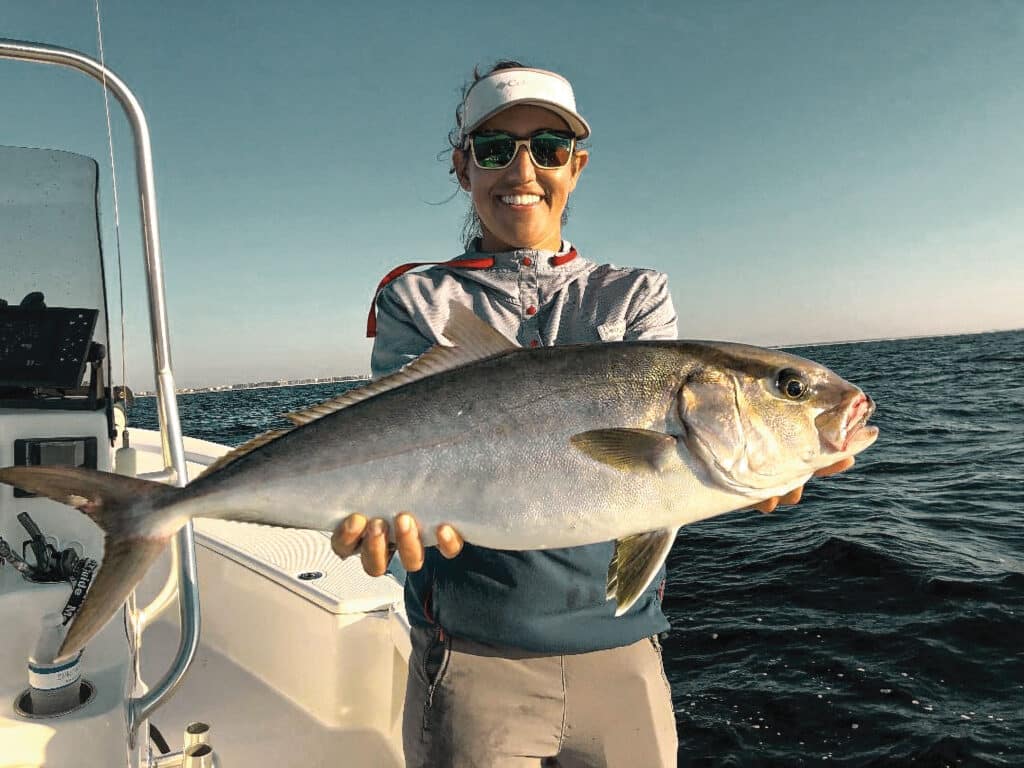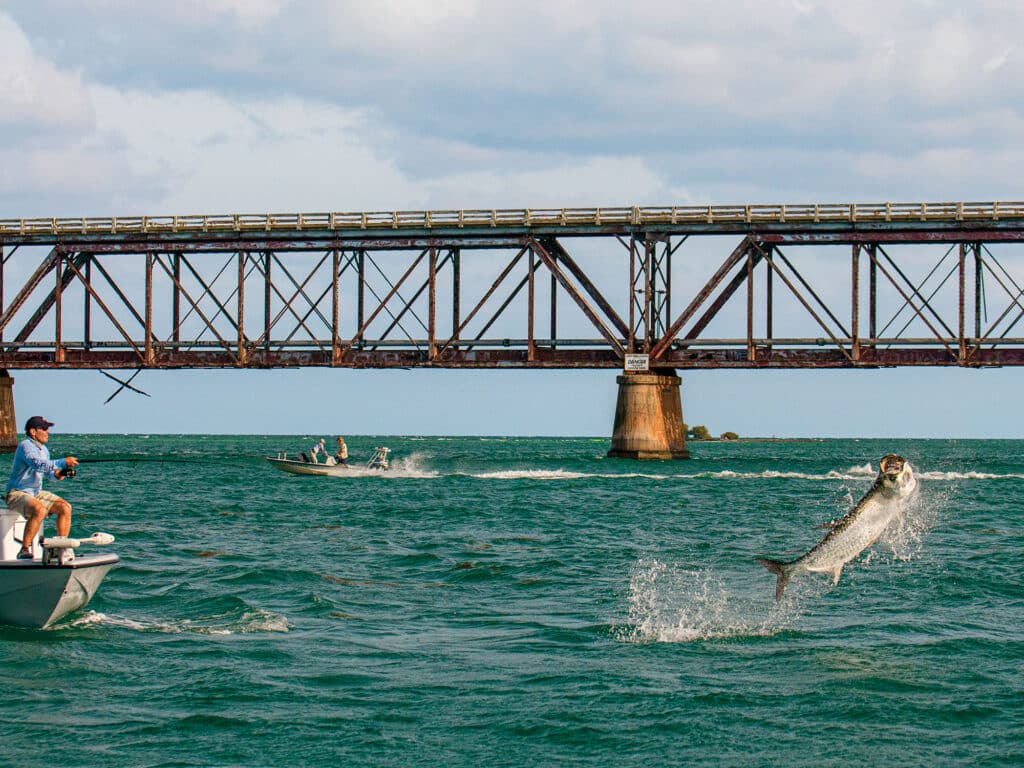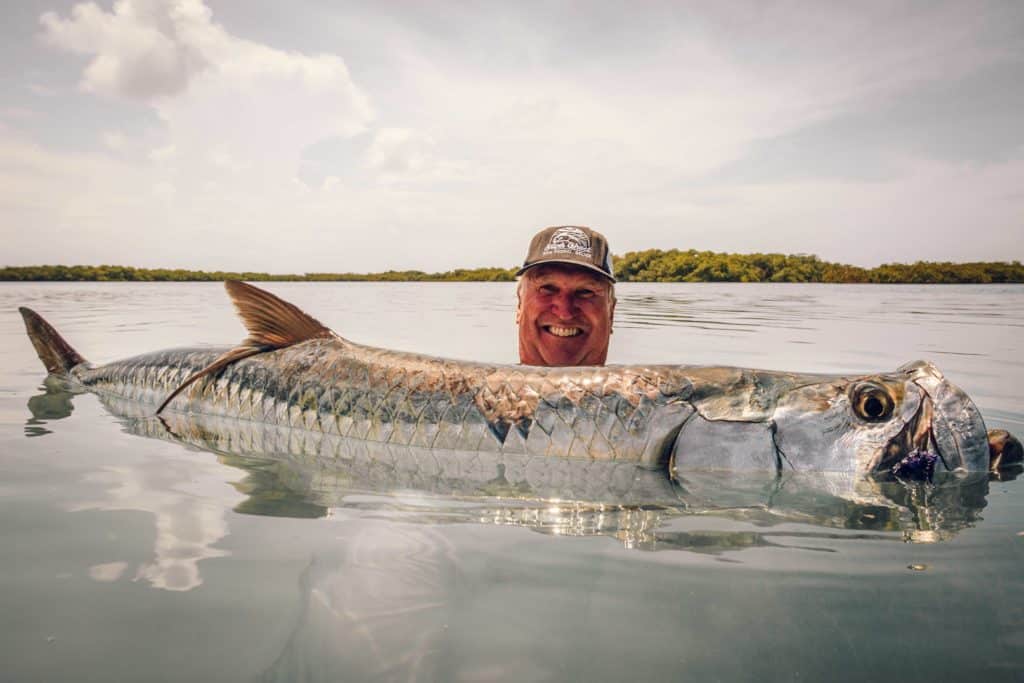
Tarpon Caught on Cape Cod
The Massachusetts surf is just about the last place you’d expect to find a silver king, but Hans Brings managed to land one.
No matter the size, tarpon all put on the same spectacular aerial battle, testing tackle to the limits.

The Massachusetts surf is just about the last place you’d expect to find a silver king, but Hans Brings managed to land one.

The five fish mostly likely to break you off, and how to keep that from happening.

Seven things to know if you want to catch a tarpon over 150 pounds.

Sometimes the photographer gets to fish.
Tarpon are truly the egalitarian big game. Ranging in size from baby tarpon, at 5 or 6 pounds, to giants approaching 200, they are available to anglers soaking dead baits on the bottom as well as skilled light-tackle casters. And no matter the size, they all put on the same spectacular aerial battle, testing tackle to the limits.
Resident and migratory to the Gulf of Mexico, and U.S. and Central American tropics, they’re found along oceanside migration routes in the spring, as well as inshore, in brackish estuaries and along mangrove coasts year-‘round. Often sought with live bait or crabs in passes and channels, they also readily hit a variety of artificial lures. Premier sport is found sight-fishing the giants over clear tidal flats. For many fly-fishermen a hundred-pounder represents a benchmark catch. The flesh is dark and unpalatable, but sporting qualities remain unmatched.